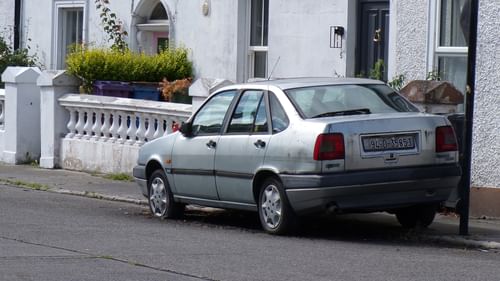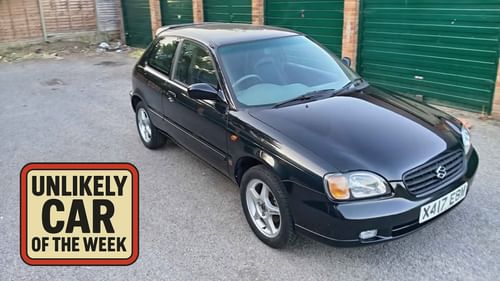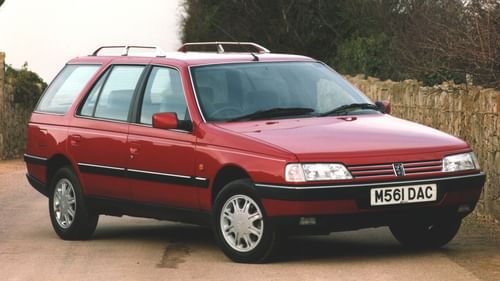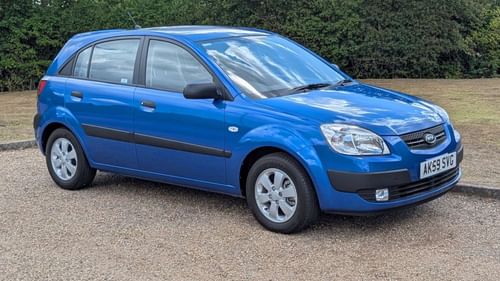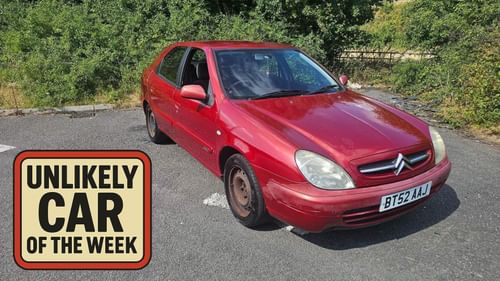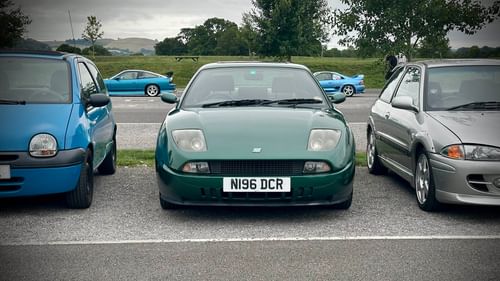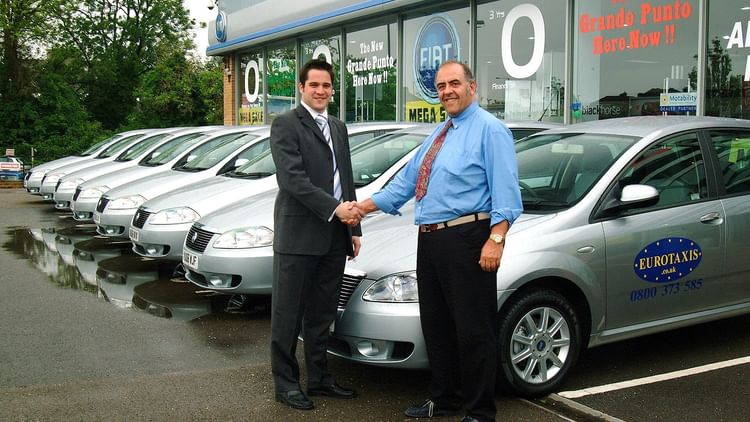
Remember the Fiat Croma? No, not that one, although do allow your mind to wander in the direction of the fabulous Type 4 cars of the 1980s; Petrolblog will take a Saab 9000, leaving you to enjoy one of the Italian flavours.
No, this is about the Fiat Croma of 2005, a car that arrived just as Nissan was preparing to unleash the Qashqai, heralding the dawning of the age of the crossover. The Croma lasted a couple of years in the UK, but soldiered on until 2010 in Europe, replaced by the Fiat Freemont – essentially a badge-engineered Dodge Journey.
You'd forgotten about the Fiat Freemont, too, hadn't you?
Fiat said the Croma ‘blends together the benefits of a saloon car, an estate and an MPV’, labelling it a 'comfort-wagon', which sounds like something you'd see being advertised in a Sunday supplement or during the ad break while watching Countdown. Imagine telling your mates you'd ordered a 'comfort-wagon'; it's the automotive equivalent of a beige cardigan.
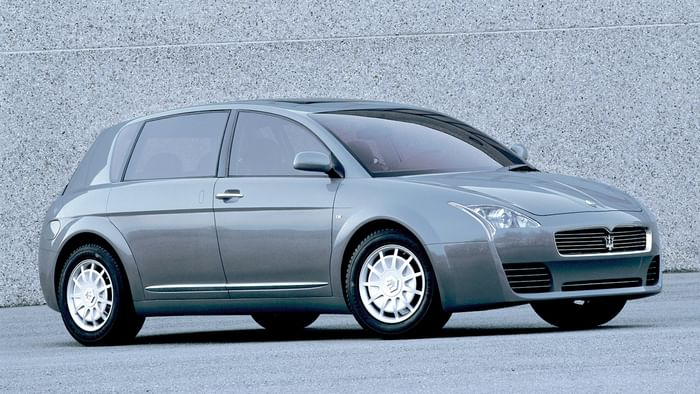
It could have looked a lot better. Giorgetto Giugiaro said: ‘I sought to make the Croma what it should be: extraordinarily spacious, highly innovative, and stunning in looks and quality. In this type of car, interior roominess takes top priority, so I looked back on the experience I gained from the design of the Maserati Buran concept car in 2000 – a high-performance, luxury car that was also extremely spacious and functional. In fact I used the same roominess and access co-efficients. All the while I was thinking about the importance of easy access, onboard space, and a comfortable interior.’
The Buran had sliding doors, a V8 engine from the Maserati 3200 GT, brown suede upholstery, and a clever boot mechanism that would have broken by the time the warranty had expired. It looked like the lovechild of the Renault Vel Satis and Vauxhall Signum, albeit with some characteristics that would have raised doubts about its parentage. What really happened during that business trip to Turin?
It's a shame that the Croma took very little from the Buran. Who wouldn't want a V8 estate-cum-MPV with a suede interior? Like the Croma of the ’80s, it shared a platform with other cars, in this case the Saab 9-3 and a pair of Vauxhalls in the form of the Vectra and Signum. This meant that it wasn't going to be the most precise instrument on the Italian equivalent of a B-road, but for autostrade duties it was perfectly acceptable.
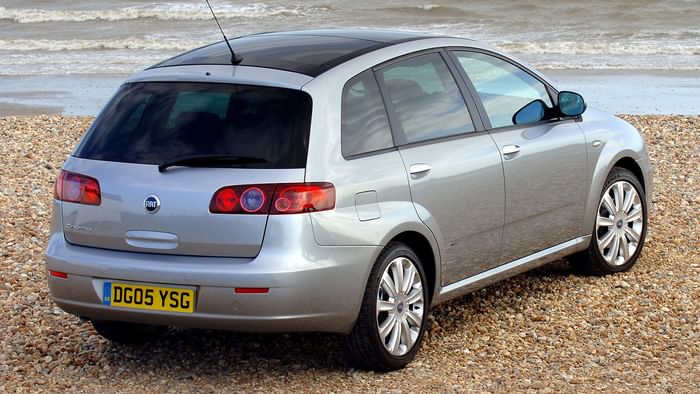
Indeed, Andrew Frankel said: ‘Only on the motorway does it feel really at home where the suspension smooths out and its tall gearing and impressive refinement make the miles slip effortlessly by.’ Avoiding slipping into a coma was the challenge. Did anyone say ‘coma-wagon’?
At 1597mm tall and 4756mm long, it was bigger than most of its competitors in the Mondeo-Vectra class, so it felt spacious inside. And a 500-litre boot – increasing to 1610 litres with the rear seats folded down – was generous.
Most buyers opted for one of the excellent Multijet diesels, with the 1.9-litre 8-valve and 16-valve units the most popular. There was also a 200bhp 2.4-litre 20-valve five-pot, capable of propelling the ‘comfort-wagon’ to 62mph in 8.5 seconds and a top speed of 134mph. Could you imagine an Italian taxi driver having one of these at his disposal? Make sure your life insurance is sorted before taking a seat in the back.
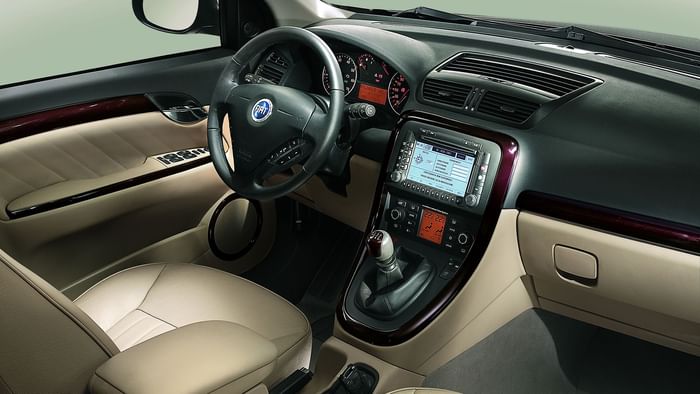
Juan Sanzo, managing director of Eurotaxis, didn't choose the five-pot diesel when he ordered 30 – yes, THIRTY – Fiat Cromas for his Bristol-based taxi firm. For him, it was the entry-level 1.9-litre 8-valve diesel and its 46.3mpg fuel economy and CO2 emissions of 160g/km.
Sanzo, with absolutely no assistance from the Fiat press office, said: ‘I have been directly involved in the evolution of Croma since I visited Turin over 12 months ago to appraise this vehicle. Croma has the kind of generous internal dimensions which make it ideally suited to the taxi business. Furthermore, the ride quality, refinement and overall look and feel of the car is second to none.’
We're assuming that's Sanzo on the right, because the chap on the left is wearing a very car salesperson-y suit – not to mention a grin that masks his concerns over the warranty claims for the next three years.
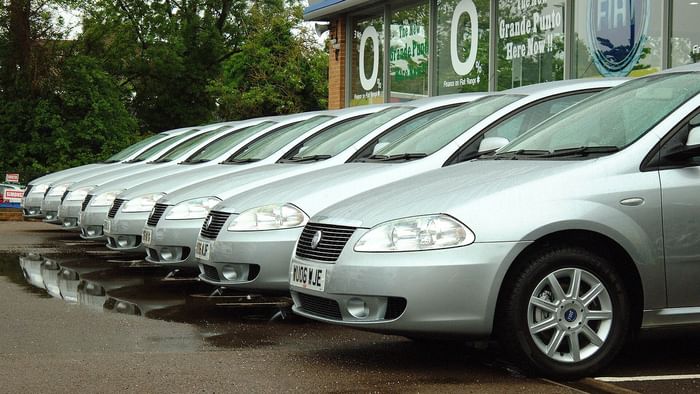
As Eurotaxis opted for the entry-level Dynamic trim, its customers missed out on the dual-zone climate control, velour and ceiling-mounted spectacles holder of the Eleganza trim, and the tinted rear windows, rear side window blinds, tilting front seats, double luggage compartment, Castiglio interior and SkyDome sunroof of the flagship Prestigio model.
The SkyDome crystal-glass was a £1000 option comprising two glazed panels – one fixed and one mobile – and two sun blinds. Just the thing for looking up and praying to the gods of road safety when the Italian cabbie is using the hard shoulder as the racing line.
The Eurotaxis Cromas would have led a hard life. The MOT history for WU06 WJF suggests that it did between 30,000 and 40,000 miles a year before having its last MOT in 2011 with around 178,000 miles on the clock. WU06 WJE had its last MOT around the same time and is currently listed as SORN.
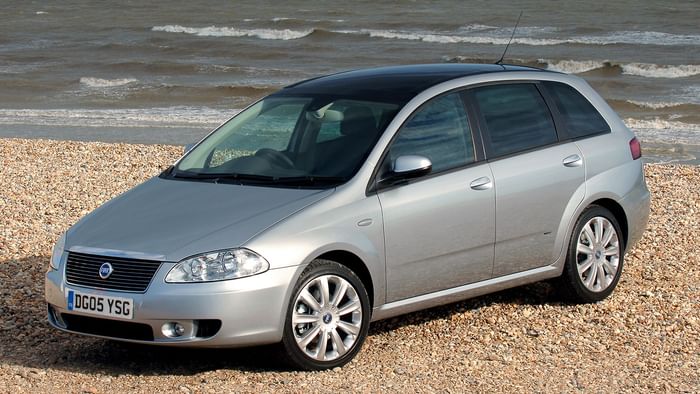
It would be easy to mock the born-again Fiat Croma for missing the mark. The styling is nondescript, there was little in the way of innovation and it didn't have brown suede seats. However, you could say the same about most of the crossovers thrust upon us following the launch of the Qashqai, and at least Fiat tried something different.
According to DVLA data, there are 18 of the 200bhp five-pot Cromas in the UK, each one furnished in full Prestigio grandeur. Find one with the optional winter pack (heated front seats, headlight washers and heated washer jets), then add some all-weather tyres, and you'll have an understated, quick and relatively economical winter beater. Petrolblog is tempted.
In the meantime, let's raise a glass to Juan Sanzo for ordering more Cromas than many Fiat dealers would have sold in a year.
